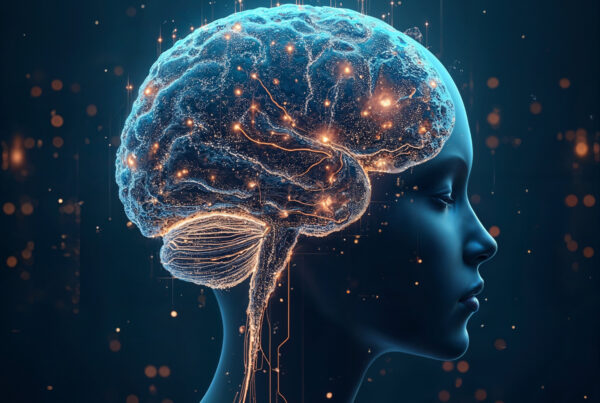In the landmark review Ketamine and the Future of Rapid-Acting Antidepressants by Lace M. Riggs and Todd D. Gould (2021), the authors explore the evolution of antidepressant therapies and the groundbreaking role of ketamine in transforming psychiatric care. For decades, patients with major depressive disorder (MDD) have relied on standard antidepressants like SSRIs and SNRIs. These medications often take weeks to show benefit—and for many, they fail to work altogether.
In sharp contrast, ketamine can rapidly alleviate depressive symptoms within hours, including in patients previously considered treatment-resistant. This review not only discusses ketamine’s history and clinical potential, but also outlines how its discovery has opened new pathways for the development of fast-acting, circuit-targeting antidepressants.
Why Traditional Antidepressants Fall Short
The limitations of first-line antidepressants are well-documented:
- Delayed onset: Symptom relief often takes 4–6 weeks or more.
- Incomplete response: Roughly one-third of patients fail to respond after multiple medication trials.
- Biological mismatch: These treatments were designed to modulate monoamine levels (e.g., serotonin), yet depression involves far more complex neural circuit disruptions.
This delay and uncertainty can have devastating consequences for patients—especially those at risk of suicide or experiencing severe functional impairment.
Ketamine: A New Therapeutic Frontier

Originally developed as an anesthetic, subanesthetic ketamine doses (0.5 mg/kg IV) were found to produce rapid and robust antidepressant effects, often within hours of a single infusion. Crucially, these effects were observed even in patients with treatment-resistant depression (TRD).
Ketamine acts differently than conventional antidepressants:
- Targets the glutamate system, not serotonin or norepinephrine
- Promotes synaptogenesis and neural plasticity
- Rapidly increases brain-derived neurotrophic factor (BDNF)
- Reverses stress-induced neural atrophy in key mood circuits
These effects are most pronounced in regions like the prefrontal cortex and hippocampus, which are known to be compromised in depression.
Mechanisms of Action: Restoring Neural Integrity
Emerging research suggests that depression may result from structural and functional impairments in neural networks, especially those governing emotion regulation, motivation, and reward. Ketamine appears to:
- Re-establish synaptic connections disrupted by chronic stress
- Trigger a cascade of molecular events involving glutamate release, AMPA receptor activation, and mTOR signaling
- Increase dendritic spine density, helping neurons communicate more effectively
This “neural rewiring” hypothesis helps explain ketamine’s rapid action and highlights the importance of targeting synaptic health in future antidepressant development.
Moving Beyond Ketamine: The Next Wave of Therapies
 Inspired by ketamine’s success, researchers are now investigating other rapid-acting agents that engage similar pathways, including:
Inspired by ketamine’s success, researchers are now investigating other rapid-acting agents that engage similar pathways, including:
- Esketamine (Spravato): An FDA-approved intranasal formulation of ketamine’s S-enantiomer
- Psilocybin: The active compound in psychedelic mushrooms, which may produce long-lasting mood improvements via neural plasticity
- Pramipexole: A dopamine agonist that may benefit treatment-resistant depression, particularly with anhedonia
These compounds represent a broader shift toward circuit-based and plasticity-promoting approaches to mood disorders.
A Paradigm Shift in Drug Development
Ketamine has not only transformed clinical practice but also revolutionized how psychiatric drugs are conceptualized and tested:
- New clinical trial models now focus on rapid symptom change
- Drug discovery efforts increasingly target synaptic and intracellular mechanisms
- Regulatory agencies like the FDA have accelerated approval pathways for novel, fast-acting compounds
This shift mirrors broader trends in medicine toward precision psychiatry, where treatment selection is informed by biomarkers, brain imaging, and individual response profiles.
Challenges and Cautions
Despite its promise, ketamine also presents challenges:
- Transient effects: Relief may last only days to weeks, requiring repeated dosing
- Risk of abuse: As a Schedule III controlled substance, ketamine can be misused
- Unknown long-term safety: More research is needed on prolonged or maintenance use
Clinicians must weigh the benefits against risks, particularly for patients with substance use history or cardiovascular conditions.
Conclusion: Redefining the Timeline of Hope
The review Ketamine and the Future of Rapid-Acting Antidepressants captures a pivotal moment in psychiatric care. By showing that depression relief doesn’t have to take weeks, ketamine has ignited hope for millions and reshaped the future of drug development.
As our understanding of brain circuits deepens, and as new compounds are developed with improved safety and duration, the vision of personalized, fast-acting depression treatments is becoming a clinical reality.
References
- Riggs LM, Gould TD. Ketamine and the Future of Rapid-Acting Antidepressants. Annu Rev Clin Psychol. 2021;17:207–231. https://doi.org/10.1146/annurev-clinpsy-081219-112622
- Duman RS, Aghajanian GK. Neurobiology of rapid acting antidepressants: role of BDNF and GSK-3β. Neuropsychopharmacology. 2014;39(1):233–246. https://doi.org/10.1038/npp.2013.234
- Abdallah CG, Sanacora G, Duman RS, Krystal JH. Ketamine and rapid-acting antidepressants: a window into a new neurobiology for mood disorder therapeutics. Annu Rev Med. 2015;66:509–523. https://doi.org/10.1146/annurev-med-053013-062946
- Berman RM, Cappiello A, Anand A, et al. Antidepressant effects of ketamine in depressed patients. Biol Psychiatry. 2000;47(4):351–354. https://doi.org/10.1016/S0006-3223(99)00230-9
- Zarate CA Jr, Singh JB, Carlson PJ, et al. A randomized trial of an N-methyl-D-aspartate antagonist in treatment-resistant major depression. Arch Gen Psychiatry. 2006;63(8):856–864. https://doi.org/10.1001/archpsyc.63.8.856




